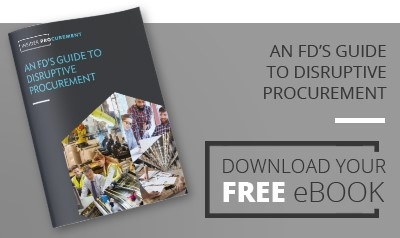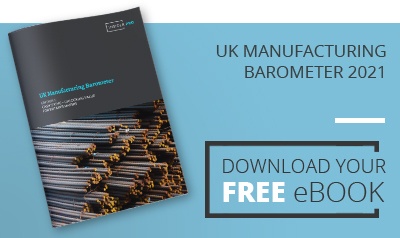Trash or rubbish, or waste, is something we all produce daily, and other than putting it into a nearby bin or putting the bins out once a week, you probably don’t think much about it. In this blog I will be talking rubbish… literally, not metaphorically.

The waste landscape is ever changing but its importance to society and business is becoming increasingly pertinent. As the population increases and individuals use and consume more and more products on a daily basis, the demand for waste disposal increases. Society is also becoming increasingly environmentally conscious, so the ability to just chuck everything to landfill is no longer an option, and with the use of rarer substances that require specific disposal methods, there is a requirement for robust waste solutions.
What types of waste are there?
There are eight types of waste, these are: (Click to slide through)





Construction and Demolition Waste



Where does waste go?
Depending on the type of waste being collected, it could go through several potential destinations and processes:
|
Destination |
Description |
Types of Waste |
|---|---|---|
|
Landfills |
The most common destination for municipal solid waste (MSW) and construction and demolition (C&D) waste. Waste is buried in managed sites designed to contain and minimise environmental impact.
|
MSW, C&D waste |
|
Recycling Facilities |
Recyclable materials such as paper, cardboard, plastics, glass, and metals are processed into new products. Electrical waste is disassembled to recover valuable components. |
Paper, cardboard, plastics, glass, metals, Electrical Waste |
|
Composting Sites |
Organic waste, including food scraps and garden waste, is processed into compost to enrich soil. |
Food scraps, garden waste |
|
Incineration Plants |
Waste-to-energy facilities burn waste to generate electricity or heat, reducing waste volume but producing emissions. Hazardous waste is incinerated to destroy toxic substances safely. |
Mixed waste, hazardous waste |
|
Transfer Stations |
Waste is temporarily held and sorted before being transported to its final destination (landfill, recycling, etc.). |
All types of waste |
How is Waste sorted?
After collection, waste is sorted manually at transfer stations by separating recyclables like paper, cardboard, plastics, and metals from non-recyclable waste, such as certain types of plastic films or wrappers. Some facilities employ automated systems to further sort waste by size, weight, and material type. The sorted waste is then processed for recycling, composting, or disposed of in landfills or incinerators based on its category.
How is waste collected from shops and restaurants
Waste collection from shops, workplaces, and restaurants involves scheduled services by local (usually council-run services) or private contractors, often using dedicated bins for recyclables, general waste, organic waste, and hazardous waste. Centralised collection points are often used in commercial settings or large residential settings. Special programmes exist for e-waste and hazardous waste, ensuring proper disposal. Recycling and composting services, along with reverse logistics for packaging, further streamline waste management.
What percentage of waste collected in sectors and businesses is recycled?
Understanding the level at which your company/sector typically recycles, and how you differentiate from this, is really important. At Insider Pro we work with a range of businesses across various sectors and with different waste requirements. It is important to understand how each organisation compares to the industry average in terms of recycling rates and overall volumes.
Recycling rates are intrinsically tied to brand image and companies' operational efficiency. A high recycling rate will mean that any restaurant chain can promote healthy eating as well as healthy living, and being in control of recycling rates will enable measures to be implemented to ensure this is continually improving.
How are waste contracts set up in terms of commercials and incentivising recycling?
Waste contracts are simple by their very nature: ‘Collect my bins and make sure I do not get an accumulation of Waste on-site’. However, the ways that they are set up vary significantly, and can cause a dramatic change in costs incurred and recycling targets met.
-
Fixed fee per month/ annually: Businesses pay a set fee each month or year, regardless of the amount of waste generated. This method offers predictable costs and budget stability, but may be less cost-effective for those with fluctuating waste volumes.
-
Pay per collection: Charges are based on the number of waste collections made. This flexible method suits businesses with variable waste production but can lead to fluctuating costs.
-
Cost per bag or per bin collection: Businesses are charged based on the number of bags or bins collected. This method encourages waste reduction and efficient bin use, but can be expensive for high-waste producers.
-
Weight based charging: Charges are determined by the weight of the waste collected. This fair approach directly reflects waste amounts, incentivising weight reduction, but requires accurate weighing systems.
-
Volume-based charging: Costs are based on the volume of waste collected. This simple method encourages efficient use of space, ideal for businesses with bulky waste, but may not account for differences in waste density.
Conclusion
In this blog, it has been highlighted that waste management is critically important to ourselves, our environment and our workplaces. Empowering waste providers to increase recycling rates and creating incentives for consumers to act in sustainable ways, are, and will continue to be, of utmost importance for the future of our environment. Understanding how waste is managed and what happens to an item once it's placed into a bin will help wider society buy-in to more sustainable practices, for our generation and generations to come.
References and Appendiceshttps://www.biffa.co.uk/biffa-insights/waste-and-recycling-glossary
https://dtmmix.co.uk/blog/types-of-waste/
https://lepageandsons.com/5-types-of-waste/
Appendix A - Waste terminology
-
Domestic Waste - Or ‘Household Waste’, is waste collected from and generated by households and includes general and recyclable waste
-
Commercial Waste - This is rubbish produced by businesses
-
Clinical Waste - Medical waste from hospitals, labs, care homes etc
-
RDF - Refuse Derived Fuel - Fuel produced from various waste types, non-combustible materials are removed
-
DMR - Dry Mixed Recycling - Dry recyclable material, this could be plastic, cardboard, paper and glass
-
EFW - Energy From Waste
-
MRF Facility - Material Recycling Facility - where waste goes to get sorted and prepared for end-user manufacturers
-
PET - Polyethylene Terephthalate- a common polymer of the polyester family used for clothing and containers including fizzy drink containers, water bottles and salad trays. Identified by a number two inside a triangle on the packaging.



